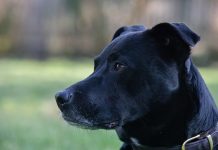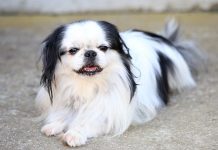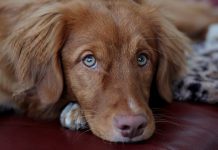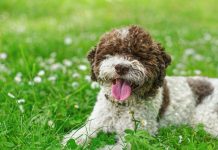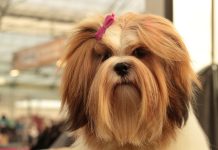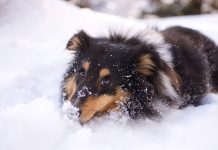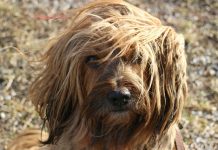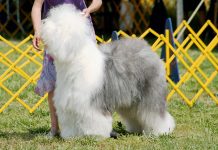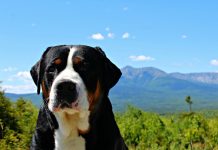History and Origins of the Chow Chow Breed
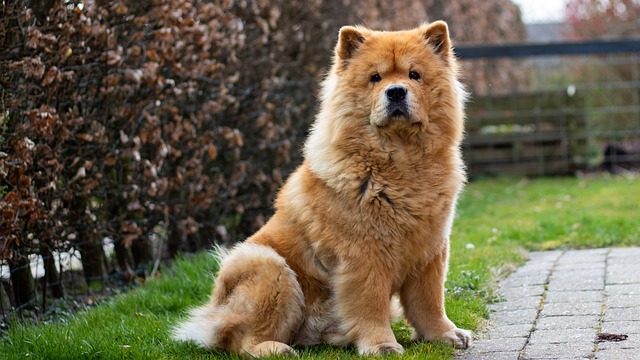
The Chow Chow is an ancient breed with a fascinating history. Here’s an overview of its origins:
- Ancient China: The Chow Chow is believed to be one of the oldest dog breeds in the world, originating in China over 2,000 years ago. They were initially used for hunting, guarding, and pulling sleds.
- Noble Heritage: Chows were favored by Chinese emperors and nobility, serving as companions and guardians in palaces and estates. They were esteemed for their loyalty, intelligence, and distinctive appearance.
- Versatile Roles: In addition to their roles as guardians and hunters, Chows were also used for herding, pulling carts, and as general-purpose working dogs in ancient China.
- Appearance in Art and Culture: Chows are depicted in ancient Chinese art and artifacts, showcasing their importance and revered status in Chinese society.
- Introduction to the West: Chows were first introduced to the Western world in the late 18th century when they were brought to Europe as exotic gifts from Chinese diplomats and traders.
- Popularity in the West: Chows gained popularity in the West during the late 19th century and early 20th century, becoming fashionable companions for the wealthy and aristocratic class.
- Breed Standardization: The Chow Chow breed was officially recognized by the American Kennel Club (AKC) in 1903. Since then, they have become cherished family pets and show dogs around the world.
Physical Characteristics and Appearance of Chow Chows
The Chow Chow is known for its unique and distinctive appearance, characterized by the following physical traits:
- Size: Chow Chows are medium-sized dogs with a sturdy build. Adult males typically stand 19 to 22 inches (48 to 56 cm) tall at the shoulder, while females are slightly smaller.
- Weight: The average weight of a Chow Chow ranges from 45 to 70 pounds (20 to 32 kg), with males being heavier than females.
- Coat: One of the Chow Chow’s most recognizable features is its dense and double-layered coat. The outer coat is straight and coarse, while the undercoat is soft and thick. Chows come in various colors, including red, black, blue, cream, and cinnamon.
- Distinctive Features: Chows have a lion-like mane around their neck and shoulders, giving them a regal appearance. Their muzzle is broad and deep, and they have a distinctive blue-black tongue.
- Eyes: Chow Chows have small, deep-set eyes that are typically dark brown in color. Their eyes have a discerning and dignified expression.
- Tail: Chows have a distinctive tail that curls over their back. The tail is set high and carried over the back in a tight curl, resting on one side of the body.
- Build: Chow Chows have a strong and compact build with a broad skull, straight legs, and a level topline. They move with a deliberate and stilted gait.
- Expression: Chows have a serious and aloof expression, which reflects their independent and dignified nature.
- Temperament: Chow Chows are known for their loyalty, independence, and aloofness. They are typically reserved with strangers but form strong bonds with their families.
Understanding the history and physical characteristics of the Chow Chow breed can help potential owners appreciate their unique qualities and provide them with the care and attention they deserve. Despite their independent nature, Chows can be loving and devoted companions for those who understand and respect their temperament.
Chow Chow Temperament and Personality Traits
Chow Chows are known for their distinctive temperament and personality traits, which set them apart from other breeds. Understanding their unique characteristics is essential for providing proper training and socialization:
- Loyalty: Chow Chows are fiercely loyal and devoted to their families. They form strong bonds with their owners and are protective of their loved ones.
- Independence: Chows have an independent nature and can be quite self-reliant. They are not overly needy or clingy but prefer to have their own space at times.
- Dignified and Aloof: Chow Chows have a dignified demeanor and can appear aloof or reserved, especially around strangers. They are not typically outgoing or eager to please like some other breeds.
- Alertness: Chows are naturally alert and watchful, making them good watchdogs. They are quick to notice changes in their environment and will alert their owners to any potential threats.
- Protectiveness: Due to their protective instincts, Chow Chows may be wary of strangers and can exhibit territorial behavior. Early socialization is important to prevent aggression or excessive shyness.
- Intelligence: Chows are intelligent dogs but can also be quite stubborn. They prefer to think for themselves and may require patient and consistent training.
- Reserved with Children: While Chow Chows can be good family dogs, they are often reserved and cautious around young children. They prefer calm and respectful interactions.
- Cat-Like Behavior: Chows exhibit some cat-like behaviors, such as grooming themselves and being independent. They are also known for their cleanliness.
- Low Activity Level: Despite their large size, Chow Chows are not overly active dogs. They are content with moderate exercise and enjoy lounging around the house.
- Heat Sensitivity: Chow Chows are sensitive to heat due to their dense coat. They should be kept cool and hydrated, especially in hot weather.
Training and Socialization Needs for Chow Chows
Proper training and socialization are crucial for Chow Chows to thrive and develop well-rounded personalities. Here are important considerations for training and socializing Chow Chows:
- Early Socialization: Start socializing your Chow Chow puppy as early as possible. Expose them to various people, places, sights, sounds, and experiences in a positive and controlled manner.
- Consistent Training: Chow Chows respond best to firm and consistent training methods. Use positive reinforcement techniques such as treats, praise, and rewards for good behavior.
- Leadership: Establish yourself as a confident and calm leader to earn your Chow Chow’s respect. Be patient but firm in your training approach.
- Obedience Training: Teach basic obedience commands such as sit, stay, come, and heel. Gradually progress to more advanced commands and exercises.
- Socialization with Children and Other Pets: Supervised interactions with children and other pets are important to teach your Chow Chow proper behavior and manners. Ensure that interactions are calm and positive.
- Watchdog Training: Capitalize on the Chow Chow’s natural guarding instincts by providing appropriate watchdog training. Teach them to alert you to visitors or unusual activities.
- Exercise Routine: While Chow Chows are not high-energy dogs, they still require regular exercise to stay healthy and mentally stimulated. Daily walks and playtime are sufficient to keep them content.
- Patience and Consistency: Chow Chows can be stubborn and strong-willed, so patience and consistency are key to successful training. Avoid harsh or punitive methods, as they can lead to resentment.
- Grooming Routine: Start grooming your Chow Chow from a young age to get them accustomed to brushing, nail trimming, and bathing. Their thick coat requires regular maintenance to prevent matting and tangles.
- Positive Reinforcement: Reward desired behaviors with treats, praise, or playtime to motivate your Chow Chow during training sessions. Stay positive and encouraging to build trust and confidence.
By providing early socialization, consistent training, and positive reinforcement, you can help your Chow Chow develop into a well-mannered, confident, and loyal companion. Respect their independent nature and unique personality traits while nurturing a strong bond based on trust and mutual understanding.
Health Considerations and Common Issues in Chow Chows
Chow Chows are generally healthy dogs, but like all breeds, they are prone to certain genetic and health issues. Being aware of these common conditions can help you provide the best care for your Chow Chow:
- Hip Dysplasia: This is a common orthopedic condition where the hip joint doesn’t develop properly, leading to arthritis and mobility issues. Regular veterinary check-ups and screening can help detect and manage hip dysplasia.
- Elbow Dysplasia: Similar to hip dysplasia, elbow dysplasia is a developmental condition affecting the elbow joint. It can cause lameness, pain, and arthritis.
- Entropion: Chow Chows may be prone to entropion, a condition where the eyelid rolls inward, causing irritation and eye problems. Surgical correction may be necessary in severe cases.
- Patellar Luxation: This condition involves the displacement of the kneecap, which can cause lameness and discomfort. Surgery may be required to correct severe cases.
- Thyroid Disorders: Chow Chows are susceptible to hypothyroidism, a condition where the thyroid gland doesn’t produce enough hormones. Symptoms include weight gain, lethargy, and skin problems. Treatment involves hormone replacement therapy.
- Allergies: Chow Chows may develop allergies to environmental factors or certain foods. Symptoms can include itching, skin irritation, and ear infections. Identifying and avoiding allergens is important for managing allergies.
- Bloat (Gastric Dilatation-Volvulus): This is a serious and life-threatening condition where the stomach fills with gas and twists. Chow Chows, especially deep-chested breeds, are at higher risk. Immediate veterinary attention is required if bloat is suspected.
- Eye Issues: Apart from entropion, Chow Chows can be prone to other eye problems such as cataracts, glaucoma, and progressive retinal atrophy (PRA). Regular eye examinations are recommended.
- Heat Sensitivity: Due to their thick coat and short muzzle, Chow Chows are sensitive to heat. They should be kept cool and hydrated, especially in hot weather.
- Cancer: Like many large breeds, Chow Chows have a higher risk of certain cancers, including mast cell tumors and lymphoma. Regular veterinary check-ups can help detect cancer early.
Living with a Chow Chow: Suitable Environments and Lifestyle Considerations
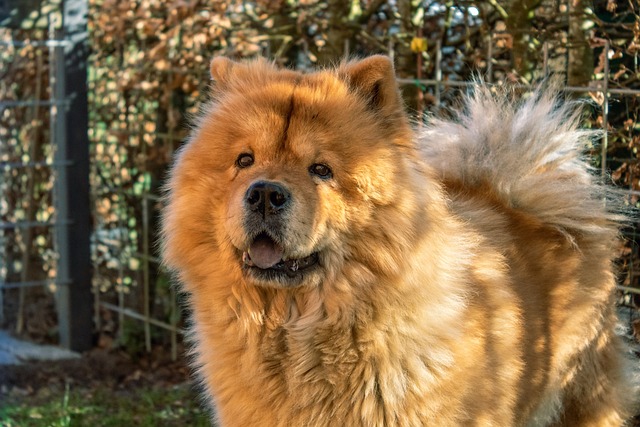
Chow Chows have unique needs and preferences that should be considered when providing them with a suitable living environment and lifestyle:
- Climate Considerations: Due to their thick coat, Chow Chows are best suited to cooler climates. They can overheat easily in hot weather, so provide shade, access to cool water, and limit outdoor activity during peak temperatures.
- Indoor Living: Chow Chows are adaptable to apartment living but require sufficient space and regular exercise. They are relatively inactive indoors but should have access to a comfortable and cool living environment.
- Exercise Routine: Despite their moderate activity level, Chow Chows benefit from daily walks and play sessions to stay healthy and mentally stimulated. Avoid strenuous exercise, especially in hot weather.
- Grooming: Chow Chows have a dense double coat that requires regular grooming to prevent matting and tangles. Brush their coat several times a week and bathe them as needed. Pay attention to their ears, eyes, and skin.
- Training and Socialization: Early training and socialization are crucial for Chow Chows to develop good manners and confidence. They can be independent and stubborn, so be patient and consistent in your training approach.
- Nutrition: Provide a balanced and nutritious diet suitable for your Chow Chow’s age, activity level, and health condition. Avoid overfeeding to prevent obesity, which can exacerbate joint issues.
- Veterinary Care: Schedule regular veterinary check-ups, vaccinations, and preventive care to monitor your Chow Chow’s health and detect any potential issues early.
- Family Environment: Chow Chows are loyal and protective of their families but may be reserved with strangers. They thrive in calm and predictable environments and may not be suitable for households with young children or chaotic dynamics.
- Companionship: Chow Chows appreciate companionship and enjoy spending time with their families. They may develop separation anxiety if left alone for long periods.
- Safety Precautions: Chow Chows are strong and independent dogs, so ensure they are securely contained when outdoors. Supervise interactions with other pets and children to prevent accidents.
By understanding and addressing the specific needs and considerations of Chow Chows, you can provide them with a safe, comfortable, and fulfilling life. Proper care, regular exercise, and attention to their health will help ensure that your Chow Chow remains happy and healthy for years to come.
Chow Chow Variations and Breeding Practices
Chow Chows are a distinctive breed with certain variations in appearance and coat color. Additionally, responsible breeding practices are essential to maintaining the health, temperament, and breed standards of Chow Chows. Here’s an overview of Chow Chow variations and breeding practices:
Chow Chow Variations
- Coat Colors: Chow Chows come in various coat colors, including red, black, blue, cinnamon, and cream. Some Chows may have solid coats, while others may have lighter or darker shading. The coat can also have a solid or sable appearance.
- Coat Length: While most Chow Chows have a dense double coat with a thick, woolly undercoat and a straight outer coat, there are variations in coat length. Some Chows may have slightly longer or shorter coats, although variations in coat length are not as common as with other breeds.
- Size: Chow Chows typically have a medium-sized build, but there can be variations in size within the breed. Some Chows may be slightly larger or smaller than the average standard, but breeders aim to maintain a consistent size range.
Breeding Practices
Responsible breeding practices are crucial for maintaining the health, temperament, and conformation of Chow Chows. Here are key aspects of breeding practices for this breed:
- Health Screening: Ethical breeders conduct thorough health screenings on their breeding stock to identify and eliminate genetic health issues. Common health screenings for Chow Chows include hip dysplasia, elbow dysplasia, patellar luxation, and eye disorders.
- Temperament and Behavior: Reputable breeders prioritize temperament and behavior when selecting breeding pairs. They aim to produce Chow Chows with stable, confident, and well-rounded personalities that are characteristic of the breed.
- Breed Standard: Responsible breeders adhere to the Chow Chow breed standard set by kennel clubs such as the American Kennel Club (AKC) or the United Kennel Club (UKC). The breed standard outlines the ideal characteristics, including appearance, size, coat color, and temperament.
- Avoiding Overbreeding: Ethical breeders are mindful of not overbreeding Chow Chows to maintain the breed’s integrity and health. They limit the number of litters produced by each breeding dog and prioritize the welfare of both the dogs and the breed as a whole.
- Genetic Diversity: Responsible breeders aim to maintain genetic diversity within the Chow Chow population to reduce the risk of inherited health conditions and promote overall breed health.
- Pedigree and Lineage: Ethical breeders maintain detailed pedigree records and lineage information for their breeding dogs. They track the ancestry and health history of each dog to make informed breeding decisions.
- Continued Education: Dedicated Chow Chow breeders are committed to ongoing education and improvement. They stay updated on the latest research, trends, and advancements in dog breeding to contribute positively to the breed’s future.
- Ethical Placement of Puppies: Responsible breeders prioritize the well-being of their puppies and ensure they are placed in suitable homes. They educate potential puppy owners about the breed’s needs and characteristics and provide ongoing support and guidance.
By supporting responsible breeding practices and working with reputable breeders, Chow Chow enthusiasts can help preserve the breed’s unique characteristics and ensure the health and well-being of future generations of Chow Chows. Ethical breeding practices contribute to the longevity and sustainability of the breed while promoting responsible pet ownership.
50 Best Names with Meanings for Chow Chow
Naming your Chow Chow is a fun and important decision! Here’s a list of 50 great names with meanings that suit the unique characteristics and dignified nature of Chow Chows:
- Kuma – Japanese for “bear”
- Luna – Latin for “moon”
- Ming – Chinese for “bright” or “shining”
- Shadow – Reflective of their protective nature
- Simba – Swahili for “lion”
- Coco – Sweet and charming
- Bruno – German for “brown”
- Ivy – Represents strength and resilience
- Kai – Hawaiian for “sea”
- Zara – Arabic for “princess”
- Leo – Latin for “lion”
- Mochi – Japanese rice cake, sweet and fluffy
- Nala – Swahili for “gift”
- Rocco – Italian for “rock”
- Sasha – Russian for “defender of mankind”
- Yuki – Japanese for “snow”
- Cinnamon – Reflective of coat color
- Hoshi – Japanese for “star”
- Mika – Japanese for “beautiful fragrance”
- Toby – English for “God is good”
- Bella – Italian for “beautiful”
- Bear – Reflective of their fluffy appearance
- Loki – Norse trickster god, mischievous
- Willow – Represents grace and flexibility
- Zephyr – Greek god of the west wind
- Misty – Reflective of their mysterious aura
- Rex – Latin for “king”
- Luna – Latin for “moon”
- Gizmo – Cute and quirky
- Coco – Sweet and charming
- Milo – Derived from Germanic name meaning “merciful”
- Hana – Korean for “flower”
- Mako – Japanese for “sincere child”
- Zeus – Greek god of thunder
- Daisy – Represents purity and innocence
- Nova – Latin for “new”
- Stella – Latin for “star”
- Samson – Hebrew for “sun”
- Suki – Japanese for “beloved”
- Brutus – Reflective of strength and power
- Sable – Reflective of coat color
- Echo – Represents their strong voice
- Mika – Japanese for “beautiful fragrance”
- Odin – Norse god of wisdom and war
- Rumi – Japanese for “beauty” or “flowing”
- Sasha – Russian for “defender of mankind”
- Momo – Japanese for “peach”
- Dexter – Reflective of intelligence and agility
- Haru – Japanese for “spring”
- Yoshi – Japanese for “good luck” or “righteous”
Choose a name that resonates with your Chow Chow’s personality, appearance, and the qualities you admire. Whether you prefer a strong and dignified name or a sweet and charming name, there’s a perfect fit waiting for your beloved companion!

In conclusion, this comprehensive guide to Chow Chow dogs has provided a detailed exploration of this unique and distinctive breed. Throughout our discussion, we’ve delved into the history, distinctive characteristics, and essential care considerations that define Chow Chows. Known for their regal appearance, independent nature, and loyalty, Chow Chows make fascinating companions for experienced dog owners. They require proper training, socialization, and grooming to thrive as well-rounded pets. As you embark on your journey with a Chow Chow, may you appreciate their unique qualities and form a strong bond with this dignified breed, creating lasting companionship and fulfillment together.







